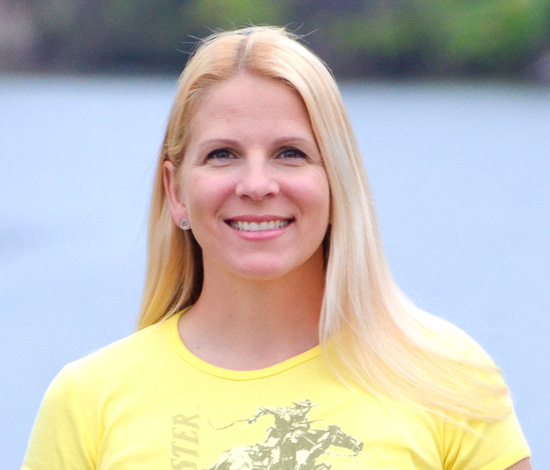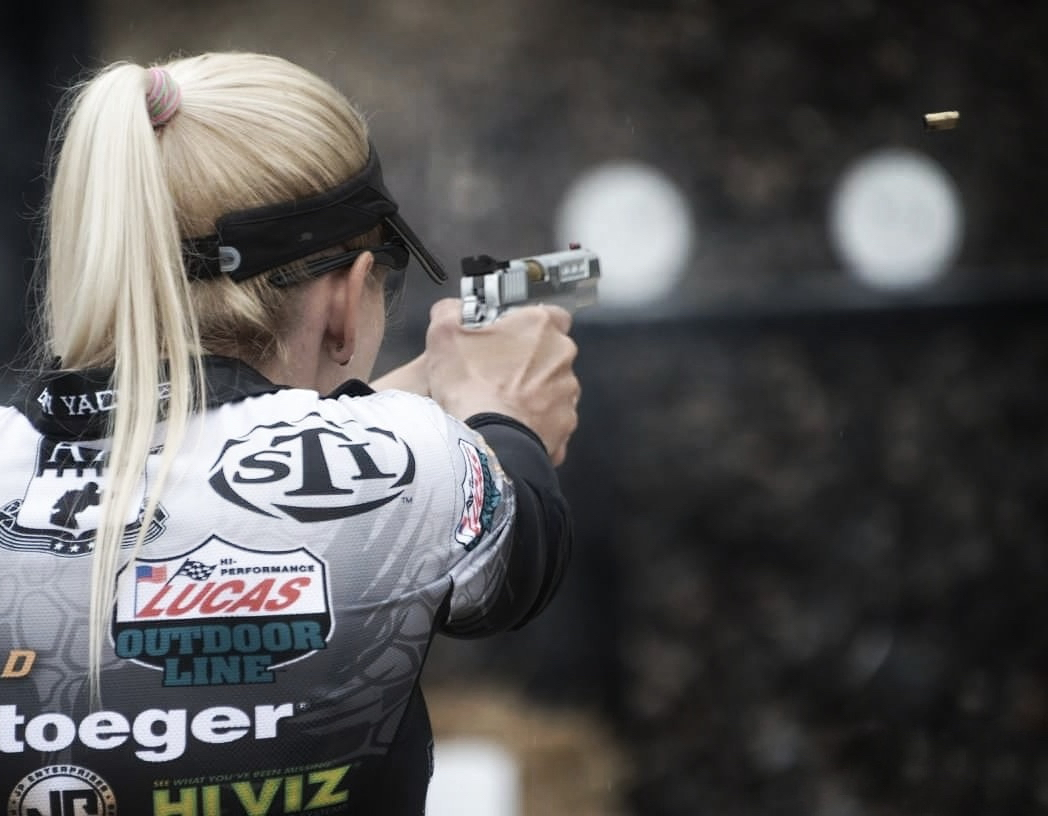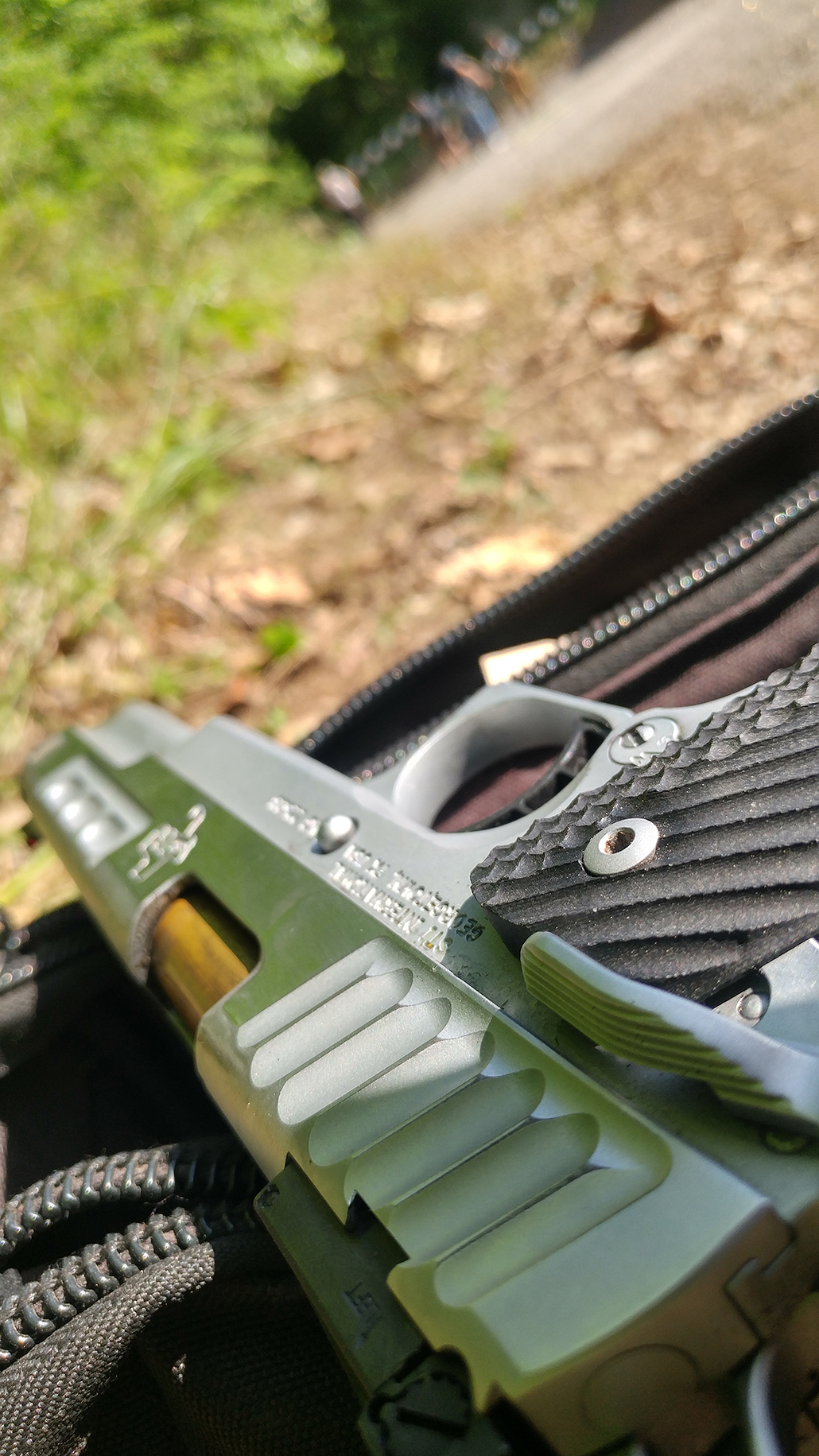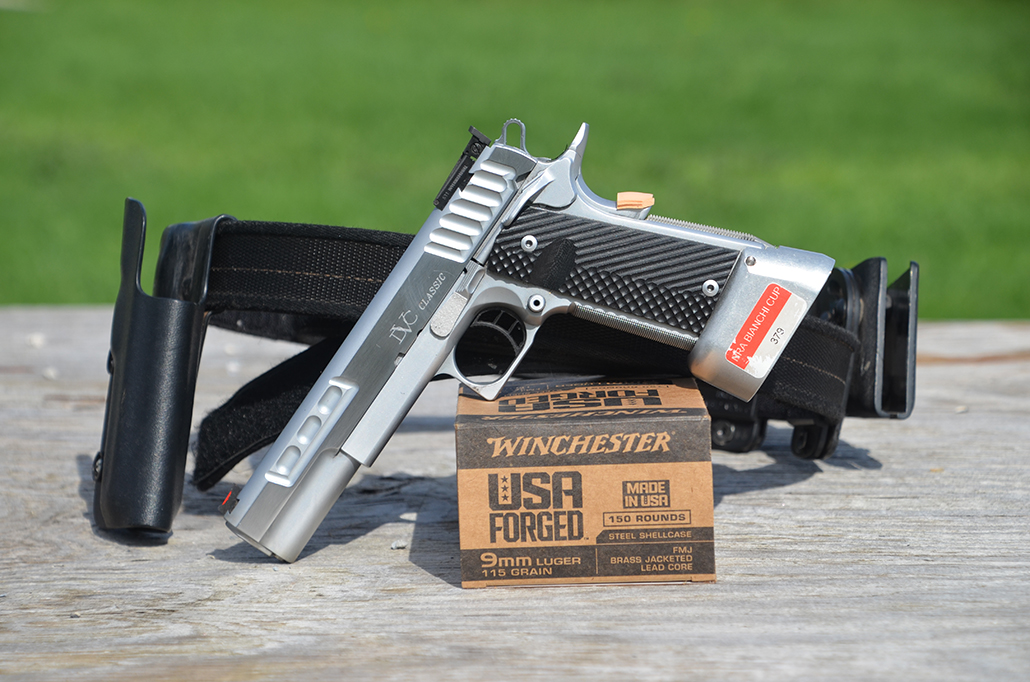Dry Fire Live Fire Exercises for Movement
In one of our earlier videos, we learned about transitions and using the time between them to help us have faster times. Now we’re going to practice that with dry fire.
Transitions start as you take a shot and begin to move to the next target. But what moves first? To build skills with transitions, we can practice with a simple draw and transition exercise.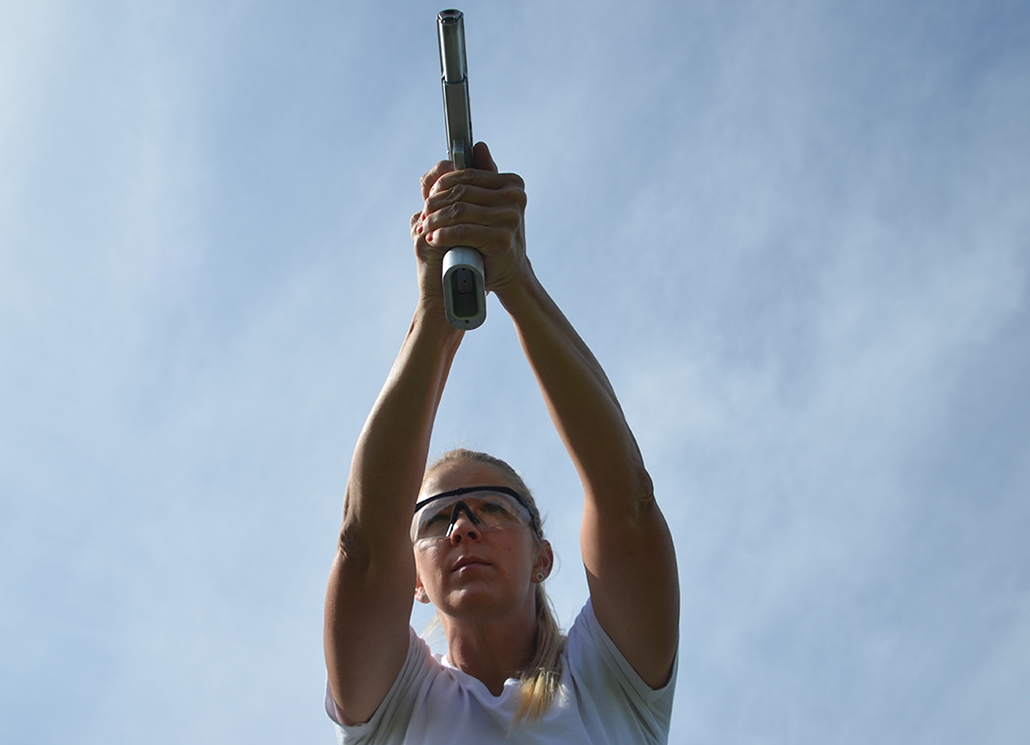
Set up!
Similar to how we talked about shooting a plate rack in our last blog, transitions require us to “set up” too. If we are facing a transition from a left to a right target, we won’t set up facing left...we orient so we can easily transition from one to the other; without creating a stance that fights itself. If I face left, it’s uncomfortable to twist and point to the right. Setting up so I can transition from one target to another is a skill that is used not just in shooting, but in stage planning as well. If I consider what target I’m shooting and where I’m going next, I can set up in the optimal location. So transitions often force the shooter to think about not just HOW he/she stand, but WHERE to stand.
Drive the gun!
Moving anything requires a power source. When we transition, that power source is our body. But we do not swing our arms and the gun to a new target, we use our whole body, our core and our legs “drive” the gun and as we transition - it is like a tank turret turning in a small increment. We want crisp, clean motion. We have to balance driving the gun with speed and force, but not so hard that we have to take more time to bring the gun to where we want it. We don’t want to force the gun over so fast that we have to settle back down...just like on our draw, we do not want to shove the gun out so fast and hard that we have to recover from that motion. Much of what shooting fast is about is being crisp, clean, and not wasting motion or effort. It’s why when you see some competitors, it looks effortless. They’re not exaggerating and compensating: They just do only what they have to do, without wasting movement and effort.
So, practice transitioning from one “target” to another with dry fire. You can even video yourself so that you see all of the small movements and potentially wasted effort. Then, practice what you need to clean up, and video again. For example, if you are forcing your transitions too hard, you can see a pause before you shoot as you reacquire focus on the sights. Working at a performable speed until you build muscle memory, and cut out wasted effort will help you move only with as much effort as you need.
See fast!
Transitions are about being fast with movement between two targets. To move fast, you have to see fast. So, one of the things we should be paying attention to are our eyes and getting our eyes to the target FIRST - the gun will follow. This will require practicing transitioning, but getting the eyes moving is a good mantra to have in mind when you need to shoot fast. Everything else you do to fire a shot comes from confirming that it’s time to shoot - your eyes tell you when it’s time to shoot. It’s #1 on the “to do” list of making a shot.
Hear Fast!
Another perk to transition drills is learning to react to the timer at the START of the beep, not the end. As soon as you hear sound, GO! Don’t wait for the end of the beep, but as soon as the sound registers in your ear, get moving!
And make sure you follow Winchester’s social media channels for more hunting and shooting tips and updates on Winchester supported events and promotions on Facebook, You Tube, Instagram and Twitter.
